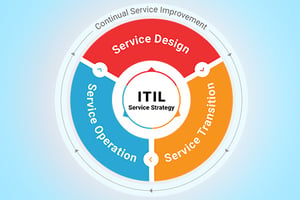Companies across the world are embracing digital transformation with a “transform or die” mentality. Industry analysts and thought leaders are telling companies of all sizes that they must transform, or risk being left behind by those that do. Hundreds of billions of dollars are being devoted to this digital evolution.

New technologies combined with new business paradigms are driving innovation at a blistering pace. Changes to organizations and technologies used to be measured in years and sometimes decades – today those changes are happening on an almost daily basis. With the advent of concepts such as AI and DevOps, we are seeing technologies being introduced and enhanced at a velocity that would have been unimaginable a decade ago.
This innovation – change if you will, must occur at this pace for digital transformation to truly succeed. On the other hand, this rapid rate of change also increases the risk of projects failing. The new tools and models we have available to us can produce amazing results, but without effective governance, they can be incredibly dangerous. Vulnerabilities can be unwittingly created and when exposed mission critical systems can be ground to a halt with costs spiraling out of control.

Remember the Basics
What we see far too often is that as companies embrace this new pace and pursue digital transformation, ITIL and particularly Change & Release Management have been relegated to the back seat in this new model. Our quest for rapid innovation has come at the expense of strong governance. The principles behind ITIL were created for a reason and they have never been more in need than in this rapidly evolving digital world.
Adhering to this framework will especially help organizations to stay on track as they adapt to the changing landscape. While there are several best-practices to employ, there are a few in particular we believe can help you:
We recommend that companies take advantage of three important basics:
- Leverage your investments in ITSM. Modern ITSM tools such as the new BMC Helix ITSM embed ITIL best practices into their core. By leveraging your ITSM solutions, you ensure that the sum of policy-directed activities, are organized by processes and supporting procedures.
- Invest in modern DevOps tools. If you haven’t embraced DevOps you need to. Many of the leading DevOps tools today can be integrated into your ITSM environments easily, reducing the perceived overhead of strong governance.
- Use automated discovery and modelling tools. This new breed of tooling provides visibility into dark and unknown parts of your organization and ensures that nothing is overlooked and that all assets are appropriately managed.
Following these basic steps ensures that the change management process is fast and well-informed, allowing governance to be embedded into the heart of innovation.
To learn more about effective governance in Digital Transformation, contact Online’s Service Management team.





Submit a Comment